Some of the best testing comes from questions we constantly ask ourselves. In my case, what is the difference between Hornady Critical Defense and Critical Duty ammo? Hornady has been making reloading components and ammunition since 1949, and it has achieved a reputation for ammunition that rivals handloads in accuracy.
Where Hornady does not get enough credit is their place in the development of hollow-point ammunition. Their XTP is an excellent general-purpose round found in calibers from .25 ACP to .50 AE. But perhaps their best offering is their FTX projectile, which features a bonded lead-core hollow-point with a polymer plug in the cavity that prevents clothing from clogging the cavity and preventing expansion. Their Critical Defense line featuring the FTX achieves a good balance of penetration and expansion, even in calibers where achieving one means sacrificing the other.
More recently, Hornady launched its Critical Duty line. Outwardly, the packaging and casing are different, but the bullet looks suspiciously similar to the Critical Defense round.
That begs the question: what is the difference? Let us explore.
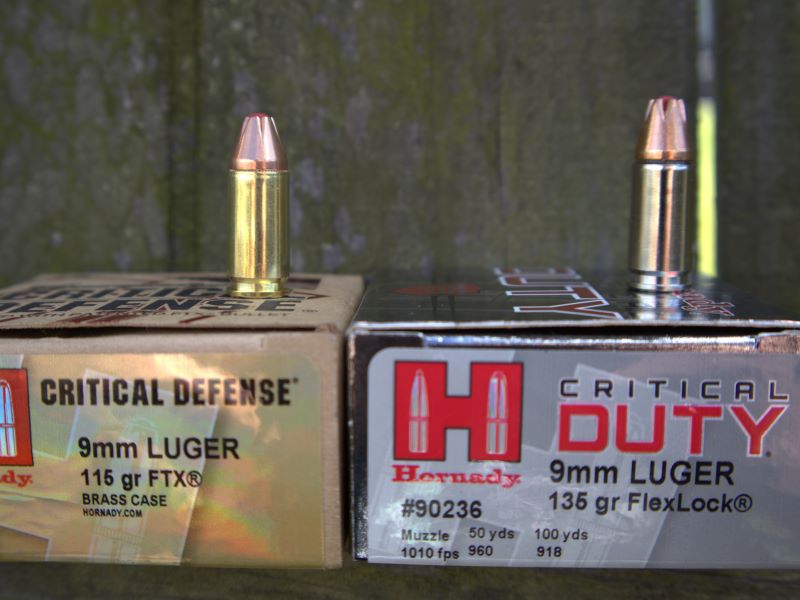
A Difference in Purpose
When I first learned about these ammunitions years ago, I was told that the Critical Defense load is intended for short, barreled handguns used by the typical concealed carrier, while the Critical Duty load is for law enforcement applications and does a better job at punching through intermediate barriers. As it happened, I was working in Texas and learned that DPS had recently adopted the 9mm +P 135-grain Critical Duty Load.
For once, the gun store talk was on the mark. While the Critical Defense ammunition is not explicitly marketed to concealed carriers, it is offered in rounds that are not considered service calibers, such as .25 ACP, .32 ACP, and .380 ACP.
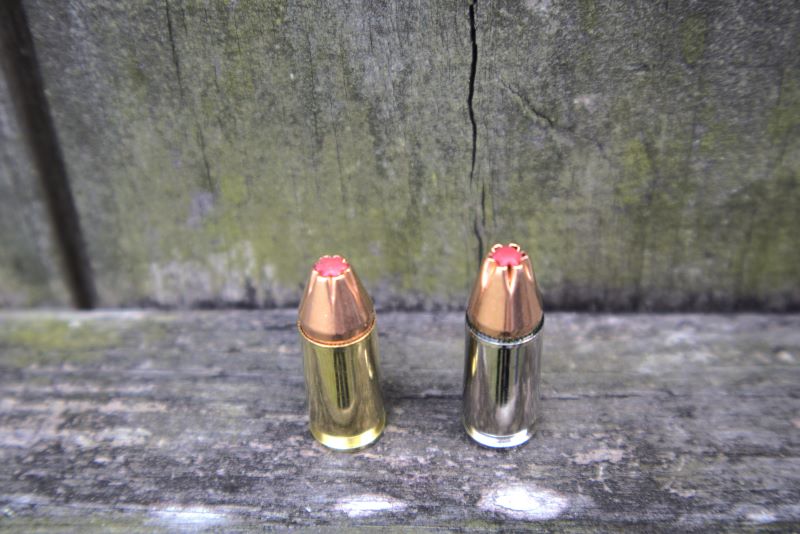
Critical Defense and Critical Duty Ammo: Velocity Overlap
By appearances, the differences between the Hornady Critical Defense and Hornady Critical Duty ammunitions might be cooked down to mere cosmetics. But similar-looking rounds do not necessarily perform the same, even in the same caliber. I decided to take out a sample of each ammunition to the range to see how they performed in terms of velocity and penetration. The 9mm loadings are numerous for the Critical Duty, including a 124-grain +P, 135-grain, and 135-grain +P load. The Critical Defense 9mm load is available only with a 115-grain bullet. To be fair to the Critical Defense load, I selected the standard pressure 135-grain load to compare against it.
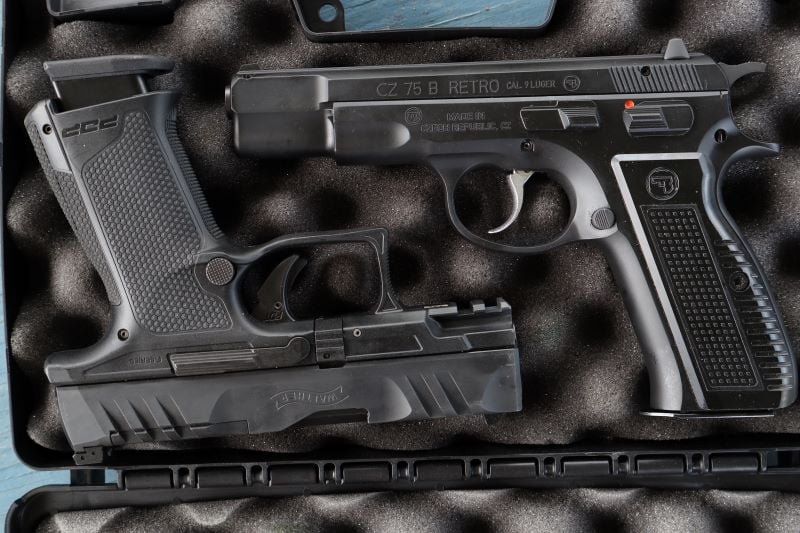
Although the Critical Defense and Critical Duty loads are optimized for different barrel lengths, I shot both with a compact and full-sized pistol: a Walther PDP with a 3.5-inch barrel and a CZ-75B with a 4.6-inch barrel. From a distance of ten feet, I shot each ammunition across my Caldwell chronograph to see how fast each round was going and to get an idea of how consistent each was shot-to-shot.
| Brand | Walther PDP 3.5-inch barrel | CZ-75 4.6-inch barrel |
| Hornady Critical Defense 115 gr. | 1118 | 1155 |
| Hornady Critical Duty 135 gr. | 1068 | 1083 |
Understanding the Data
While I expected higher velocities with the lighter 115-grain ammunition, the 135-grain Critical Defense load was never far behind, and it made up for it with its extra weight in terms of energy. With the PDP, the Critical Defense round was only 50 feet per second faster than the Critical Duty round. The difference was only slightly more pronounced with the CZ. Overall, the longer-barreled CZ yielded the highest velocities, but the difference is negligible. The lighter Critical Defense 115 grain ammunition yielded 319-foot pounds of energy from the Walther. The Critical Duty squeaked past it with 342-foot pounds of energy.
I chronographed the 135-grain +P Critical Duty load in a previous test using the same pistols. The Walther yielded a five-round average of 1,090 feet per second, while the CZ averaged 1,114 FPS. In terms of spread, all ammunition used had a variation of less than 20 feet per second.
The Critical Defense and Critical Duty loads are reliable and consistent. But velocity is not everything, and, as this little test shows, sometimes added barrel length and even the +P moniker does not give you enough extra velocity to make a difference. However, I did feel the difference while shooting on the range. The Critical Duty round has a more pronounced muzzle rise and felt recoil using the compact pistol. Even in the all-steel CZ, I could feel the slide cycling harder. Neither round was prohibitive to shoot out of either handgun.
Critical Defense vs. Critical Duty: Ballistic Gel Test
To test both ammunitions against one another, I set up blocks of Clear Ballistics 10% ordnance gelatin. This is a consistent medium that simulates muscle tissue. I fronted the blocks with four layers of denim to represent a through shot with the toughest clothing on the street. It is also a decent simulation of heavy clothing, which can generally turn the best jacketed hollow-point bullets into glorified FMJ.
I shot a string of three rounds of each ammo offering through this setup from a distance of 10 feet. The Critical Defense load traversed through the first block, leaving puckered stretch cavities measuring .5 inches wide and marking from 1.5 to 5 inches. After that point, the tracts settled. One round lost its polymer tip and stopped at 14.5 inches in the second block. The other two rounds were not far behind, landing at 14 and 14.25 inches. The recovered projectiles had uniform expansion measuring between .43 and .44 inches.

The Critical Duty load gave similar damage to the gelatin blocks. The finished projectiles looked the same and measured the same. The difference was penetration. All three projectiles penetrated two blocks and stopped in the third. One round made it to 21 inches, while the other two made it to 19.5 inches. If we use the arbitrary 12-18 inch rule the FBI uses in this medium, both rounds meet or exceed it.
Critical Defense vs. Critical Duty: 2x4s
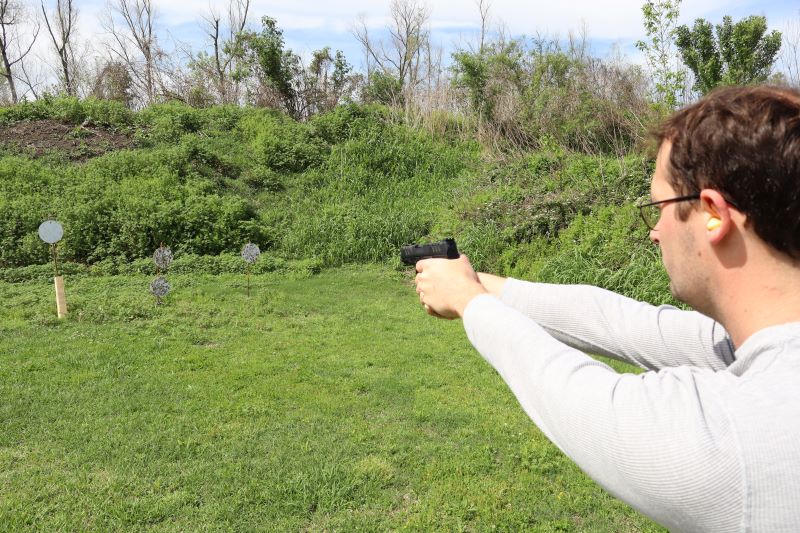
One can qualify the Critical Duty for technically over-penetrating, but those extra few inches might make the difference if you are shooting at something under concealment or something larger than the usual target. To put that scenario to the test, I decided to change from supple gelatin to hard pine 2x4s to see how quickly each round would stop. From a distance of seven yards, I fired two rounds of the Critical Duty followed by two rounds of the Critical Defense.
The Critical Defense rounds mushroomed against the stacked pine. Both rounds barely penetrated the first board, leaving heavy dents in the front of the second. The Critical Duty rounds punched through the first. Both cracked the back of the second board, with one round denting the front of the third board.
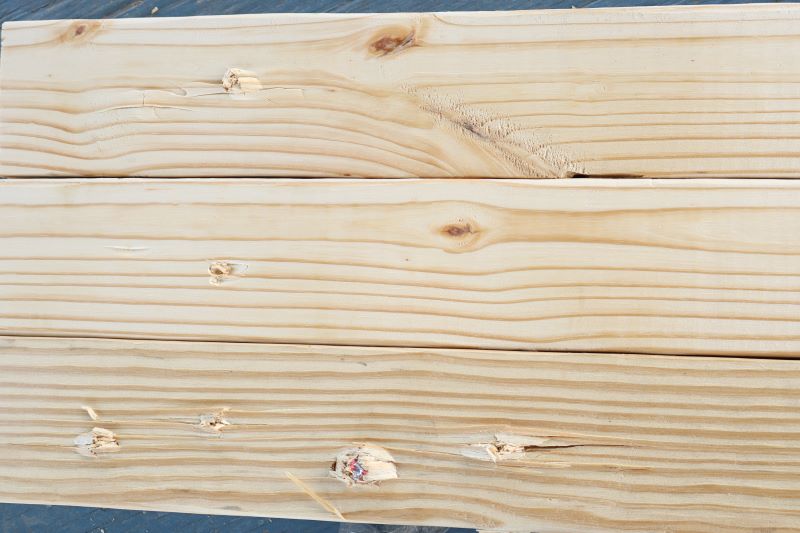

The Bottom Line
The Hornady Critical Defense and Critical Duty loads are proven to excel at the tasks they were designed for. Ultimately, which round you pick will be up to your personal circumstances. A new shooter might pick the Critical Defense load because of its light recoil. Likewise, the Critical Defense will suffice if your day-to-day life is deep concealment in relatively open spaces. But if you can handle the Critical Duty load, it can accomplish the same tasks with the added bonus of its enhanced barrier penetration ability if you are ever faced with that uncertainty.

